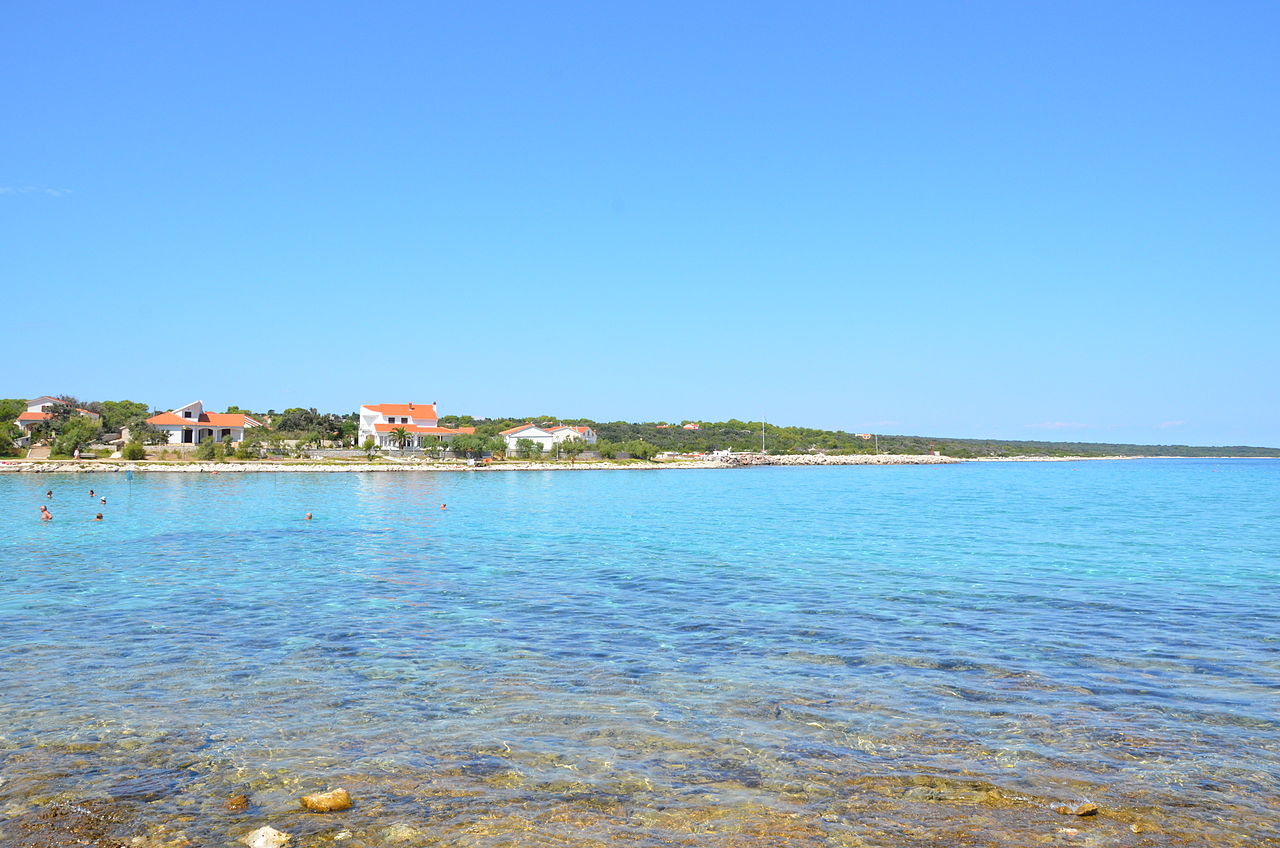We’ve published a short video on air travel at the University of Bristol.
Here is a blog to accompany the video to give you more detail on the biggest issues that the university (and other similar organisations who rely on air travel) are facing as it works towards making itself carbon neutral by 2030. Caboteer Eleni Michalopoulou, who features in the video, explains more…
The effects of climate change now have almost a daily mention in the news as they become all the more frequent and evident by various studies, reports, blogs and pictures from all over the world. And as the climate crisis escalates, it was of course a matter of time before scientists pointed out the irony of flying to a conference in order to discuss the urgency and issues related to climate change. Of course, there is here an irony within the irony that led to a lot of finger pointing of scientists that do fly and a narrative of ‘unethical scientists’ that ‘don’t practice what they preach’ but we will come back to that a little later when we explore some of the reasons that people (not just scientists) fly.

I must admit that before I attended the workshop organized by the University of Bristol Sustainability Team with support from the Cabot Institute on the 10 June 2019, I had never really considered the actual facts and figures related to the aviation industry. So, I started doing some research and these are only some of the numbers I came across:
- In 2018, nearly 4.4 billion passengers were carried by airlines globally, and yet it’s estimated that only one in five of the world’s population have ever flown in a plane.
- Over 65.5 million jobs are supported worldwide in aviation and tourism, out of which, 10.2 million people are working directly in the aviation industry.
- In 2018, domestic and international flights emitted around 895m tonnes of CO2 (MtCO2), which is 2.4% of global energy-related CO2 emissions. Taking into account the significant non- CO2 climate effects of aircraft flying at altitude, the sector is responsible for an estimated 4.9% of man-made warming. Aviation emissions have doubled in the past 20 years and could more than double again by 2050 even if planes become substantially more fuel-efficient and airlines save additional carbon by optimising their operations.
- If the aviation industry were a country, it would rank 20th in the world in terms of gross domestic product (GDP), and sixth in terms of carbon emissions.
- Someone flying from London to New York and back generates roughly the same level of emissions as the average person in the EU does by heating their home for a whole year. and more than the average person does in a year in 56 countries of the world
On the 17 April 2019, the University of Bristol became the first university in the UK to declare a climate emergency and joined a long list of organizations and institutions across the world in the fight against climate change. This announcement came to highlight the university’s commitment to become carbon neutral by 2030.
 |
| Bike servicing and repair at the University of Bristol |
As part of this efforts to accelerate action on its own climate impacts, the University is now developing a plan to address academic and other business travel and in particular air travel. The first task has been to assess the carbon footprint of the thousands of journeys made each year on University business by academics, postgraduate students and professional services staff.
Business travel emissions lie outside the scope of mandatory carbon reporting required in the higher education sector and are not included in the University’s carbon neutral goal. Nonetheless for the past few years the University has collated emissions data on flights and other forms of business travel, alongside those from energy use in buildings and the fuel used by its own vehicle fleet.
In order for the University to monitor and report carbon emissions, it uses three different ‘scopes’.
- Scope 1 – Emissions are direct emissions from activities owned or controlled by the University, such as University owned vehicles and the fuel they use.
- Scope 2 – Emissions are indirect emissions from electricity owned or consumed by the University that we do not own or control.
- Scope 3 – Emissions are other indirect emissions that are related to the University’s activities, such as waste, water and business travel.
Analysis of these data for the business travel plan suggest that emissions from air travel have more than doubled since 2010/11 and now account for nearly one fifth of the University’s total known operational carbon footprint. This growth has occurred against a backdrop of declining emissions from the University’s estate achieved through investment, for example, in improved energy efficiency in buildings.
This was the context for the workshop on ‘Air travel: Drivers, impacts and opportunities for change’ in order to explore the most efficient way to develop a business travel plan for the University including the constraints and opportunities for managing the impacts of air travel for academic and other business reasons. The Vice-Chancellor for Global Engagement, Dr Erik Lithander, was present in this workshop and highlighted the need to maintain our global impact as a leading university while managing our environmental footprint and remaining committed to our strong sustainability agenda.
One of the most interesting parts of the workshop was the discussion around the reasons behind air travel in the University of Bristol. So, what is academic and business travel usually linked to according to the most recent staff travel survey? This found the most common reasons (for business or academic travel) were to attend a conference or other forum for sharing research; take part in collaborative projects with other academic or industry partners; and go to other types of meetings on University business. Travel for fieldwork and training purposes was less frequent, followed by attending trade shows and recruitment.
Discussions during the workshop considered the reasons why flying might be the first choice over video-conferencing or other travel modes)’. The following five responses emerged from the roundtable discussions as the key determining factors in the choice of air travel over other alternatives:
- Time
- Costs
- Technological limitations (e.g. quality of videocalls)
- The importance of face-to-face interaction, and
- Air travel being the default option in funding requirements or travel management companies.
I suppose when I walked into the workshop, my thinking regarding air travel was overly simplistic. I had not realized the complexity of this issue especially for an institution as big as the University of Bristol. During the discussions around the reasons behind flying, three were the reasons that really troubled me in terms of a complex problem that potentially requires a complex solution.
Time
Perhaps the most important issue is the issue of time. A direct flight from Bristol to, for instance, Edinburgh is approximately one hour while the same distance if covered by train is six hours in a best-case scenario. And while for most of us this could be an opportunity to relax and enjoy a lovely trip by train, what about cases where there are caring responsibilities involved, or even an extremely busy workload? This question brings us back to the irony of the irony that I briefly mentioned in the beginning. While climate scientists care, of course, about the environment and their own environmental footprint, in a lot of cases they have families, children, or are responsible for the care of a relative or an individual and increasing the duration of their business trip by 10 or even 20 hours might not be a realistic goal to set.
Costs
Similarly, while a direct flight from Bristol to Edinburgh can cost from £23 pounds, the train from Bristol to Edinburgh ranges between £140 and £280 pounds. Of course, for the biggest part these expenses are not covered by the individual researcher but even so, a very simple question to ask would be ‘why use a substantial amount from the budget to cover a train ticket and not use the cheap option of a plane ticket?’
Physical presence
What was perhaps discussed the most during the workshop was the culture and beliefs behind the idea that an academic’s physical presence would be much more beneficial and could better achieve the purpose of their visit (e.g. research, collaboration, securing funding, networking) rather than the e-presence of the same individual. Can our physical presence be replaced with the help of technology? Can we achieve the same goals through an e-conference than we would if we were there? What can replace a handshake?
I should at this point highlight, that I am not writing the above in defense of flying. I am writing it as a way to reflect on my own thoughts and discussions with colleagues both during the workshop but also afterwards. Afterall, if there was one thing that was evident from the IPCC report was the fact that our lifestyle would have to go through ‘unprecedented changes’ in order for our planet and the climate to have a chance. Perhaps, while a train trip might seem as an inconvenience or disruption to us right now it will be nothing compared to future “inconveniences and disruptions” of a much-deteriorated climate.
I truly believe that it is extremely courageous for the University to start quantifying and addressing its own emissions related to air travel. This effort to explore both the limitations but also the opportunities, by consulting and talking to members of staff is the University’s best bet in order to both meet its very ambitious sustainability goals but also maintain a strong global presence and agenda. Following the workshop in June, a program of wider staff engagement is due to take place continue in the autumn to help develop the University’s approach to air travel. Like many other colleagues, I look forward to the opportunity to contribute to this important response to the climate emergency.
————————————
This blog was written by Cabot Institute member Eleni Michalopoulou from the University of Bristol School of Chemistry.
 |
| Eleni Michalopoulou |




